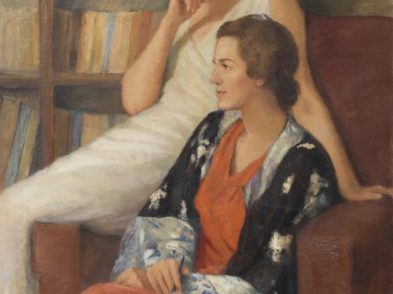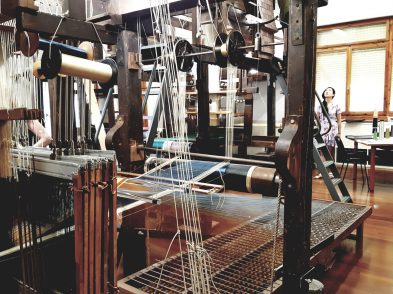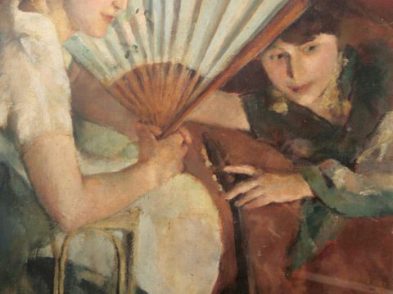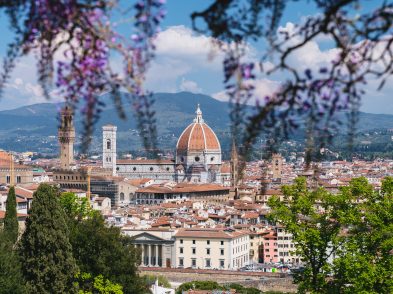Adriana Pincherle (1906–96) and Eloisa Pacini (1928–74) are two very different painters in style and in personality, whose commonality was their love for Florence—the place they made their creative home. They are the “leading ladies” of the 2016 edition of “Women Artists of the 1900s”. This biennial program pairs together a well-known artist with one awaiting discovery. Its focus is research, restoration and exhibition of works by modern women artists, who lived and worked in Tuscany. The two small-scale but unique exhibitions listed below provide a wonderful opportunity to compare and contrast their art this spring.
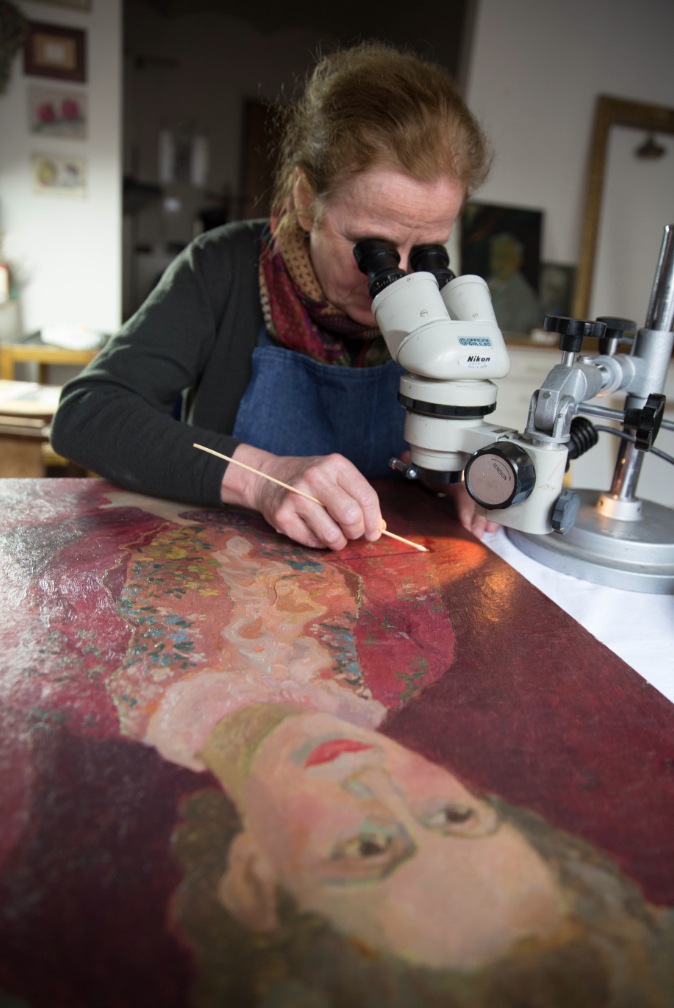
Restoration of a portrait by Gianna Manzini. Ph. Kirsten Hills
May 12–29
Adriana Pincherle. Colors of an Artist
Exhibition at Palazzo del Pegaso, via Cavour 4
Adriana Pincherle, a Roman artist born into a well-known Jewish-Catholic family, loved experimentation and the use of dramatic colors in her works. She was particularly inspired by French painters like Monet, Matisse and Bonnard. Pincherle married neo-humanist painter and art critic Onofrio Martinelli (1900–66), whose persona was larger than life and could have overshadowed her, but Pincherle’s art was the center of her existence. Her brother Alberto Moravia (1907–90), a renowned Italian novelist, was also a big influence in her life. She and her husband moved to Florence in 1941 and became very involved in the city’s cultural circles. They frequented Caffè Giubbe Rosse in piazza della Repubblica, where the literati and intellectuals who patronized it played an important role in the history of Italian culture by printing avant-garde European-inspired literary journals. The Palazzo del Pegaso exhibition will include nine interesting portraits depicting their entourage (including Elsa Morante, Carlo Emilio Gadda and Roberto Longhi) as well as four self-portraits. These paintings have been restored recently by the Advancing Women Artists Foundation and are normally housed at the Contemporary Archive “A. Bonsanti” in Palazzo Corsini Suarez. Part of the Vieusseux institute, this archive contains seventy of Pincherle’s oils, pastels and watercolors, in addition to her books, photographs and letters.
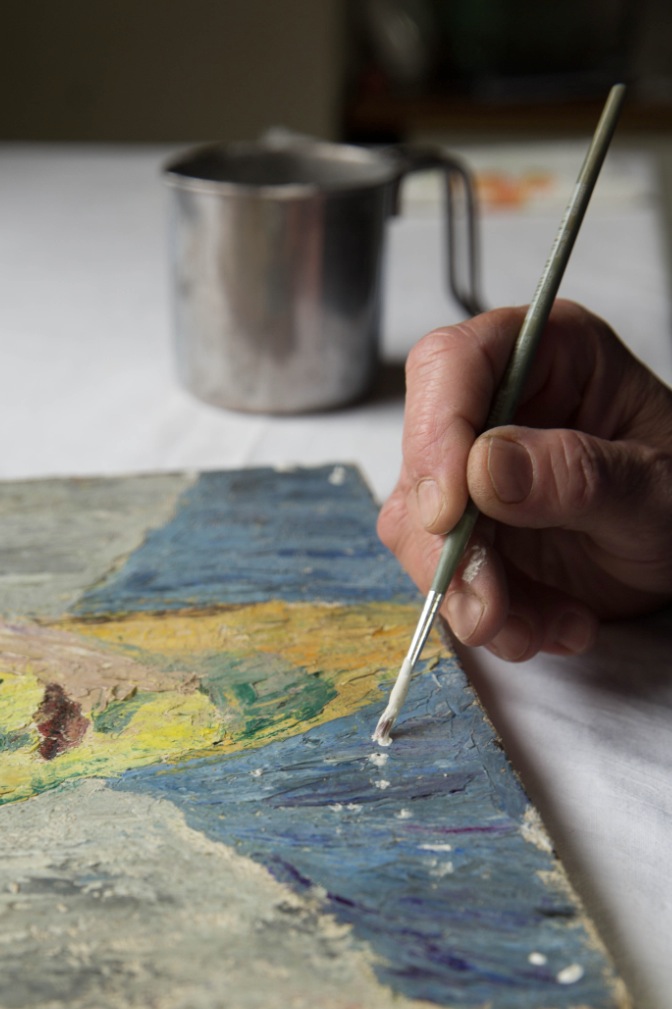
Restoration of a self-portrait. Ph. Kirsten Hills
May 13–June 10
Art and Memory. Adriana Pincherle and Eloisa Pacini
Exhibition at Villa il Palmerino, via del Palmerino 6
Once home to British writer Vernon Lee and poet-painter Carola Costa Angela, Villa il Palmerino is said to have a “feminine soul”. This spring, it will become stage to a “gem-like” exhibition featuring Adriana Pincherle and Eloisa Pacini.
Pacini was born in Pistoia. In 1928 she married architect Giovanni Michelucci (1891–1991), who was one of the most important Italian architects and urban planners of the twentieth century. He designed the Santa Maria Novella train station in Florence, the Church of the Autostrada del Sole and the modern Ponte alle Grazie (destroyed in WWII), to name a few. In 1928, the couple became extremely involved in the intellectual culture of the era and Pacini understood that Michelucci’s professional success needed her full attention. Thus, in 1935, she abandoned her up-and-coming public artistic career and painted only in the privacy of her home, Villa Il Roseto, (now Fondazione Giovanni Michelucci Foundation, see page 35 for a photo story about this Wunderkammer of a place). Her works decorated the walls of the villa, but were never as a complete series, until 2003, when the Foundation hosted a monographic public exhibition of her works. These pastel and oils, so long hidden, give the viewer a peek into her life—that of a caring wife who “stood behind her man”. Our 2016 show strives to guarantee that her art and her legacy will not fade into oblivion, but gain a permanent place in the annuals of Florentine art history.
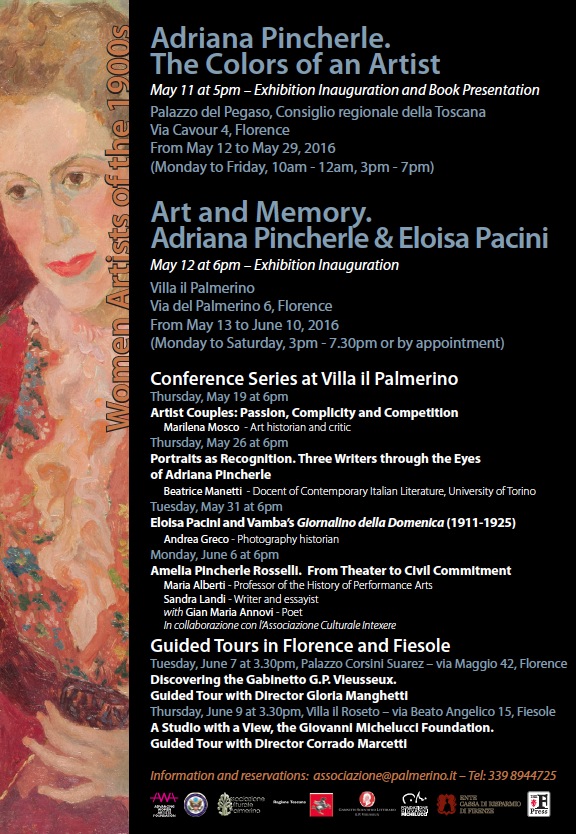
The exhibitions’ bilingual dual-catalog, Pincherle and Pacini, Twentieth-century Women Painters in Florence (published by The Florentine Press), will be launched at 5pm on May 11, during the inauguration of “Adriana Pincherle. Colors of an Artist” at Palazzo del Pegaso. We hope you will join us!



